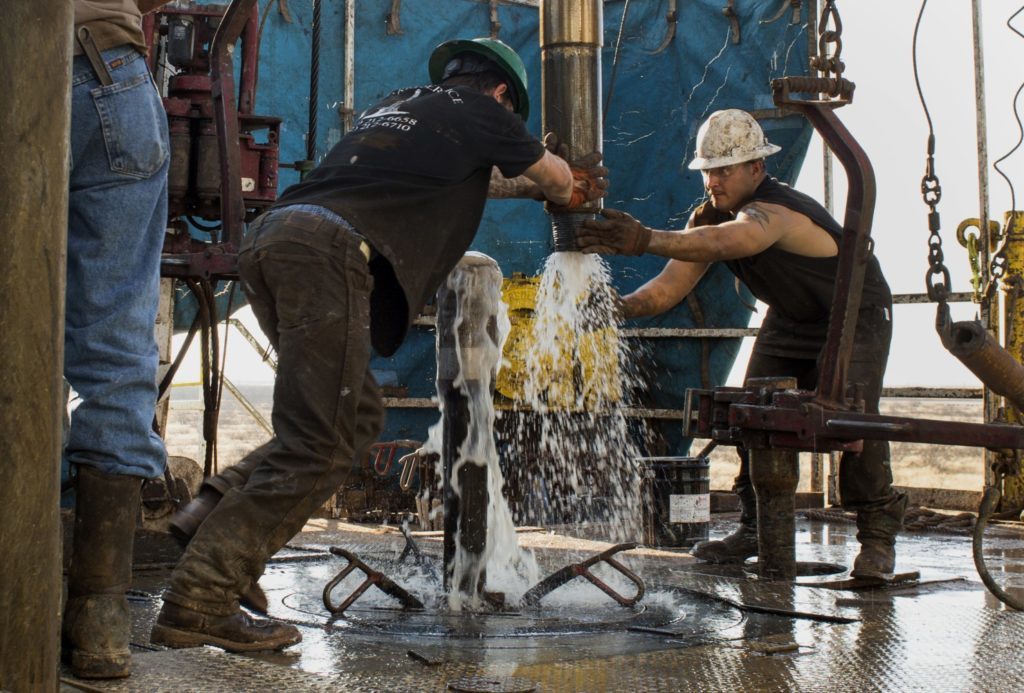
The world’s hottest oil field, the Permian Basin of West Texas and New Mexico, isn’t without its risks.
Drillers are pumping billions of dollars into the region, plumbing reserves that rival Saudi Arabia’s biggest field. And with production expected to almost double by 2022, the rewards are expected to be vast. But as costs rise and pipeline capacity fails to keep pace with production, the Permian can still pose a challenge.
Here are five potential pitfalls concerning investors:
1. Costs
With super majors like Exxon Mobil Corp. and Chevron Corp. coming late to the shale boom and now planning an aggressive production boost, competition for everything from frack crews to sand has skyrocketed. Truck drivers in the Permian can earn as much as $120,000 a year, according to Joseph Triepke of Infill Thinking LLC, an oil and gas consultancy.
We’ve been here before. In the three years before the 2014 plunge in oil prices, service costs rose about 26 percent, according to the U.S. Bureau of Labor Statistics. While costs dropped as producers cut back after the crash, they’re on the rise again. Pioneer Natural Resources Co. and Occidental Petroleum Corp. see industry costs climbing as much as 15 percent this year.
The competition for well completions and labor, along with an increase in truck traffic in the basin, means “all of a sudden, the time that it takes to get wells on production is taking much longer than you thought,” David Deckelbaum, an analyst at KeyBanc Capital Markets Inc. in New York, said in phone interview. “Once you’re losing time, you’re losing return.”
2. Gas
Drilling for oil in the Permian also yields a flood of natural gas, which should mean extra revenue. But without enough pipelines to get supplies to major markets, gas is becoming more of a hindrance than a help. Unable to burn or release gas due to environmental regulations, producers must sell to a small number of hubs, irrespective of the price. That can add to costs.
“There’s a real risk of hub pricing being at a loss,” Guggenheim Securities LLC analyst Subash Chandra said by phone. “You might very well end up losing money on your gas assets.”
Mark Papa, one of shale’s pioneers and founder of EOG Resources Inc., says it’s a problem that keeps him awake at night.
One feature of shale is that, at a certain point in a well’s lifespan, gas production increases rapidly to the exclusion of oil. This is known as the ‘bubble point’. Pioneer’s stock plunged 16 percent in a single day in August after revealing a higher-than-expected gas content, dragging the rest of the industry’s shares down with it.
The stock has since rebounded and Chief Executive Officer Tim Dove said the gas output hasn’t come at the expense of crude supply. Occidental Petroleum has said this issue is already baked into its growth projections.
3. Drilling Intensity
With new wells being drilled at a ferocious rate all over the basin, there’s a risk that the fractures created in the rock may start to interfere with one another, reducing pressure and ultimately investor returns. That’s especially true with lateral wells reaching farther than ever into the Permian’s horizontal layers.
“The downside risks related to tighter well spacing and well-on-well interference could bring peak Permian production forward by four years compared with the upside case,” Wood Mackenzie Ltd. said in a September report. That puts “more than 1.5 million barrels per day of future production in question.”
On the flipside, improvements in technology may cause production to be higher than current forecasts, Dallas-based Wood Mackenzie analyst Robert Clarke said.
4. Returns
Soaring production from U.S. shale has so far failed to translate into soaring returns for shareholders. In the last year, the S&P 500 Energy Index has dropped 1.7 percent amid an 18 percent gain in West Texas Intermediate crude. The overall S&P 500 has gained 17 percent.
And the supply gains may not last. A key feature of shale is that output comes online in a short space of time — months, as opposed to the years it takes to get a major offshore well flowing. While this means quicker cash returns, it also means producers have to keep investing capital in drilling new wells.
“Naturally, everyone is going to end up with shorter and shorter inventory over time if you’re not out there looking for new plays,” Deckelbaum said.
5. Land
The attractiveness of the Permian’s reserves, multiple layers of oil-bearing rock, and relative ease of doing business has pushed the cost of land there to twice that of other U.S. basins. The feeding frenzy makes it more difficult for new entrants, who may be able to further technological progress, and for existing producers wanting to either increase their footprint or fill gaps in their acreage to boost efficiency.
With acreage assembled over time in different packages, many companies have Permian assets that aren’t contiguous, a problem when drilling laterally as far as three miles. Given high land prices, companies such as Chevron are negotiating deals to swap or share rights, which can be a slow process.
Recommended for you
